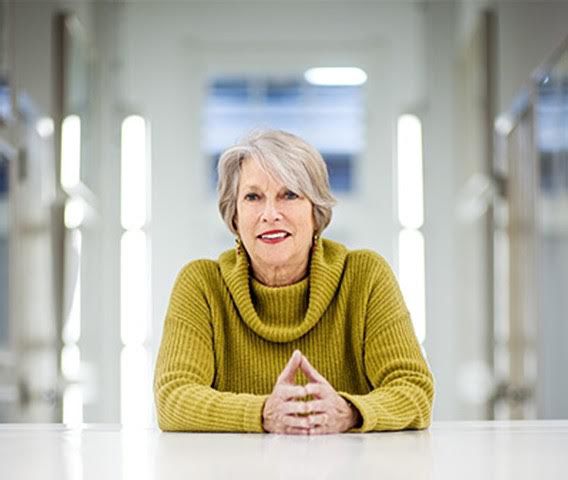Holocaust themes unite artists’ different media
Published August 17, 2016
The art of Bunny Burson and Roy Strassberg in the upcoming exhibition “Between the Lines” at Craft Alliance in the Delmar Loop appears very different on the surface but shares major themes. Burson, a local printmaker, and Strassberg, a ceramic artist, both lost family in the Holocaust. Their legacies are the crux of the exhibition.
Burson says of the relationship between her work and Strassberg’s: “There’s a definite thematic connection as well as a similar palette, and there’s an interesting, dynamic contrast in media.”
In 2009, Burson found in her mother’s attic dozens of letters from her mother’s parents to their daughter. They sent their children to America on the day Kristallnacht began, Nov. 9, 1938. From 1939 to 1941, when they wrote the letters, they tried to escape first from Germany and then from Latvia. They did not make it out of Europe.
ADVERTISEMENT
“My mother could never speak of them,” Burson said. “My work gave me not only the opportunity to explore Holocaust history in a very personal way, but also a deeper understanding and appreciation of my Judaism.”
Burson’s prints display reproduced handwritten passages from the letters. One of her most beautiful pieces is a limited-edition artist book titled “Hidden in Plain Sight.” The book highlights three letters: one from Burson’s grandfather in 1939, one from her grandmother in 1940, and one from her mother in 1941 which was returned.
“The book consists of a complex interweaving of reproductions of various elements from the original letters, pages from the German letters, English translations and imprints of their envelopes,” Burson said. “My original prints take up and rearticulate aspects of these letters.
“These letters represented my grandparents’ mounting desperation.”
Burson’s passion for making and working with paper is vital to her well-being.
ADVERTISEMENT
“My art is a very important part of my life, and the biggest challenge is making enough time to be creative,” she said.
“Hidden in Plain Sight” reveals three themes also present in Strassberg’s work: dealing with loss, the quest for self-knowledge and the exploration of collective memory.
Strassberg’s grandparents came to the United States before the war, but he lost great-aunts and great-uncles.
“My work is a distillation of all I know about the Holocaust,” he said.
A resident of North Carolina, Strassberg describes himself as an artist who happens to work in clay. In college, a pottery instructor gave him a lump of clay to work on the potter’s wheel. The process revealed to him the power of the material.
“At 66, I have the same drive to create that I had at 18,” he said.
Despite that drive, Strassberg still contends with difficulties.
“The creation of my work is intellectually challenging and stimulating,” he said. “When I designed my work on a computer, it was boring. Now I look at an element I put on a form, and it tells me what the next element should be.”
Strassberg examines ideas about the Holocaust through ceramic containers called Bone Boxes. These are dark, monochromatic vessels filled with ceramic representations of architectural fragments.
The inspiration for these in part came to the artist when he visited one of his parents in the hospital. He was struck by the horizontal rhythm of people in beds.
Strassberg also is interested in the parts of things.
“The idea for modeling some fragments after bones came from pictures of the skeletons of Holocaust victims,” he said.
The fragments in these works may be seen as metaphors for genocide: All that remains are tiny pieces of the whole.
The artist also incorporates aerial views of Auschwitz into his work.
“I went to the camp in 2003 because I needed primary knowledge of my source,” Strassberg said. “This experience elevated the quality of my work.”
That said, it was very hard for him to be there.
“Someone designed that place,” Strassberg said. “They designed the crematoria and execution chambers. It was a factory of death.”
Strassberg grew up in a religious household but doesn’t practice. However, he said that his work “is very much about being Jewish. It states that the Holocaust really happened. I have a sense of obligation to do the right thing.”
Burson also feels a strong sense of obligation.
“ ‘Hidden in Plain Sight’ pays tribute to my grandparents and to my mother, whose strength and optimism set an example for me throughout my life,” she said.
















